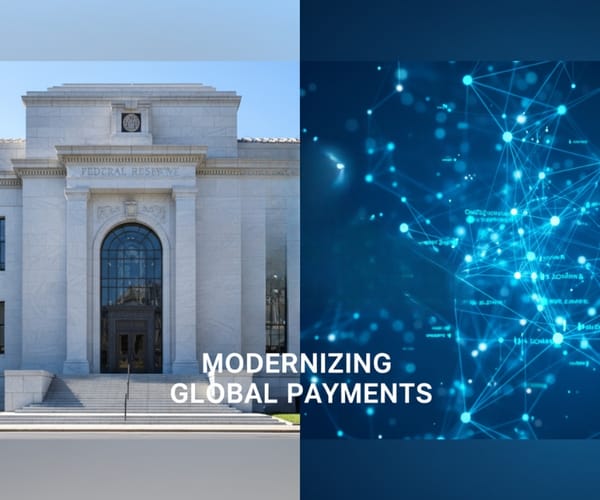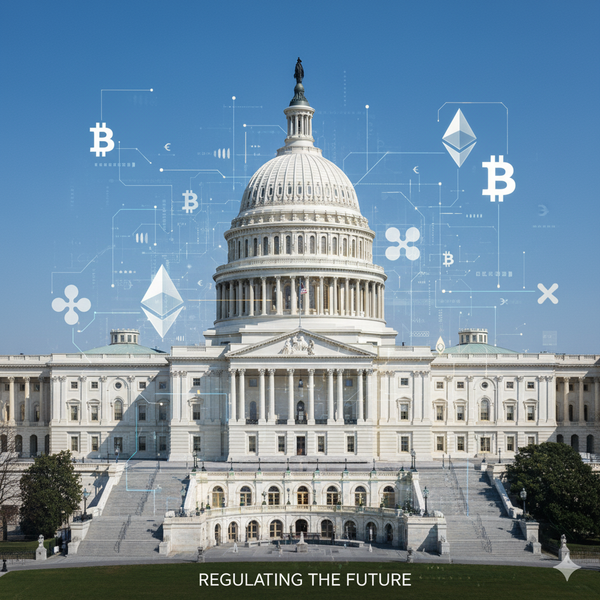Swiss Banks Make History: First Legally Binding Blockchain Payment
UBS, PostFinance & Sygnum execute the first legally binding interbank payment using tokenized deposits on public blockchain—a milestone validating institutional crypto adoption & boosting XRP's bridge currency prospects.

September 2025 marks a watershed moment for digital finance: UBS, PostFinance, and Sygnum Bank have successfully completed the first legally binding payment using tokenized deposits on a public blockchain under the Swiss Bankers Association (SBA), demonstrating that traditional banking infrastructure can operate seamlessly with distributed ledger technology.
The groundbreaking transaction involved the banks issuing tokenized representations of fiat bank deposits, dubbed "deposit tokens," and using these tokens to trigger an off-chain payment handled by smart contracts. According to the SBA's September 16 announcement, this represents the first time banks have carried out a legally binding payment across institutions using bank deposits and a public blockchain—a milestone that validates years of regulatory development and technical integration efforts.
‼️SEPTEMBER 2025: FOR THE FIRST TIME SWISS BANKS USE TOKENIZED DEPOSITS TO MAKE A LEGALLY BINDING PAYMENT ON A PUBLIC BLOCKCHAIN‼️
— SMQKE (@SMQKEDQG) October 2, 2025
This is considered “one of the most significant documents to emerge from the intersection of traditional finance and blockchain technology this… pic.twitter.com/DFgXU9K153
A New Standard for Financial Settlement
The pilot involved multiple testing scenarios, including a standard payment between customers of the participating banks and a more complex escrow-style transaction where banks successfully swapped deposit tokens for tokenized real-world assets (RWAs) entirely using smart contracts. This dual approach demonstrates blockchain's versatility in handling both simple transfers and sophisticated conditional settlements.
The system's underlying smart contracts enable "verifiable processes, technical security, and compliance with regulatory requirements," according to the SBA, which added that public blockchains with permissioned applications can trigger "legally binding" payments. This breakthrough is particularly significant because it bridges the gap between traditional finance's regulatory framework and blockchain's technological capabilities.
Thomas Frei, head of product innovation at Sygnum Bank, called this development "something really new", emphasizing the unprecedented nature of cross-bank interoperability on a public blockchain. Frei noted that "our tokenized deposits can be used across different banks, which is something that was not there yet", distinguishing this achievement from previous single-institution blockchain initiatives.
Market Implications and Regulatory Progress
The successful Swiss trial signals growing regulatory acceptance of blockchain technology within traditional finance. Switzerland houses a robust domestic payments network powered by technologies like the Swiss Interbank Clearing (SIC) system, but these traditional setups are not designed to handle programmable conditions or integrate easily with blockchain-based markets. By enabling tokenized deposits to function as legal tender for inter-bank settlements, Swiss regulators have addressed one of the primary obstacles preventing institutional blockchain adoption: legal enforceability.
Christoph Puhr, digital assets lead at UBS Group, believes "interoperability of bank money via public blockchains can become a reality," which could translate into more "innovation around tokenized assets". This sentiment reflects growing confidence that blockchain infrastructure can coexist with—and enhance—traditional banking systems.
However, participants noted that broader implementation would require collaboration beyond the pilot banks to bring in more financial institutions, infrastructure providers, and regulatory bodies to ensure interoperability and legal clarity across jurisdictions. Scalability challenges, such as throughput capacity, on-chain privacy, and integration with existing banking systems, were identified as areas requiring further refinement.
This breakthrough could accelerate similar initiatives globally as banks observe a working model for compliant blockchain integration. Recently, the London Stock Exchange Group completed the first-ever blockchain-powered fundraising, and in Germany, the Boerse Stuttgart Group launched a blockchain-powered settlement platform for cross-border tokenized asset trades in Europe.
XRP and Ripple: Strategic Implications
This development holds particular relevance for XRP and Ripple, whose core business model centers on enabling cross-border payments and institutional liquidity solutions using blockchain technology. Ripple has long advocated for regulated blockchain applications in banking, and the Swiss trial validates the company's fundamental thesis: that financial institutions can use distributed ledger technology for real-time, legally binding settlements.
Impact on XRP's Utility: The successful Swiss transaction demonstrates that institutional demand for blockchain-based settlement solutions is real and actionable. XRP serves multiple functions within the XRP Ledger (XRPL) and RippleNet ecosystem, including paying transaction fees and acting as a bridge currency in On-Demand Liquidity (ODL) transactions, enabling efficient cross-border settlements without requiring pre-funded accounts. As more banks explore blockchain settlement like the Swiss pioneers, the demand for neutral bridge assets like XRP could expand significantly.
Instead of holding reserves in multiple foreign currencies through nostro accounts, financial institutions can hold XRP—exchanging it on demand for any currency they need, which greatly simplifies global liquidity management and dramatically cuts costs. The Swiss trial's success in creating interoperable deposit tokens mirrors Ripple's long-standing vision for frictionless institutional settlements.
Ripple's Business Prospects: Ripple's payments, custody and stablecoin solutions empower financial institutions to integrate blockchain and digital assets into their business in a simple, secure, compliant way. The Swiss precedent could accelerate conversations with banks that have been hesitant to adopt blockchain solutions due to legal uncertainties. Dozens of banks and fintech companies use XRP to settle cross-border payments and manage their liquidity, with RippleNet's global network continuing to expand.
In December 2024, Ripple launched Ripple USD (RLUSD), a US dollar-pegged stablecoin available natively on both the XRP Ledger and Ethereum, designed for institutional use including cross-border payments, FX trading, treasury management, and settlement of tokenized assets like U.S. Treasuries. This institutional focus aligns perfectly with the Swiss banks' demonstration of tokenized deposit functionality.
Recent Institutional Momentum: The timing of the Swiss announcement coincides with significant institutional developments for Ripple. On September 30, 2025, the U.S. Securities and Exchange Commission (SEC) granted a no-action letter permitting registered investment advisers and broker-dealers to hold XRP in custody, removing a key obstacle for large institutions and enabling them to store digital assets with authorized custodians. Additionally, Ripple's partner Thunes integrated its Pay-to-Banks service into SWIFT's extensive network, connecting XRP to approximately 11,000 banks worldwide.
Regulatory Momentum: In July 2023, U.S. District Judge Analisa Torres ruled that sales of XRP to retail buyers via exchanges are not securities, though institutional large-block XRP sales are securities. On June 27, 2025, Ripple announced it would drop its cross-appeal, with the SEC also expected to drop its appeal, moving toward resolution. The combination of legal clarity in the U.S. and demonstrated success in Switzerland creates a more favorable environment for Ripple's expansion.
Price Potential: While price predictions remain speculative, XRP surpassed $180 billion in market capitalization and now processes over 2.14 million daily transactions, demonstrating substantial market presence. Successful institutional adoption of blockchain settlements like the Swiss trial could increase demand for XRP as a bridge asset. However, cryptocurrency markets remain inherently volatile, and investors should exercise caution.
Looking Forward
The SBA emphasized that while results confirm the "feasibility" of institutional payment using blockchain technology, scalability requires "additional design adjustments and increased cooperation with other banks, infrastructure providers, and authorities". Despite these challenges, the achievement represents more than a technical milestone—it establishes a functional blueprint for how traditional finance can integrate blockchain technology while maintaining regulatory compliance.
By demonstrating that binding payments between banks can take place over a public blockchain, UBS, PostFinance and Sygnum have provided a real-world example of how decentralized technology can be harmonized with trusted financial oversight. As this model spreads to other jurisdictions, the distinction between "traditional" and "crypto" finance may increasingly blur, creating new opportunities for projects like Ripple that have built infrastructure specifically for this convergence.
For the crypto industry, September 2025 may be remembered as the month when blockchain payments moved from experimental to institutional reality. For XRP holders and Ripple supporters, it validates the long-held belief that regulatory compliance and technological innovation are not mutually exclusive, but rather complementary forces shaping the future of global finance.
DISCLAIMER: This newsletter is for informational purposes only and does not constitute investment advice, advertising, or a recommendation to buy, sell, or hold any securities. This content is not sponsored by or affiliated with any of the mentioned entities. Investments in cryptocurrencies or other financial assets carry significant risks, including the potential for total loss, extreme volatility, and regulatory uncertainty. Past performance is not indicative of future results. Always consult a qualified financial professional and conduct thorough research before making any investment decisions.
Sources
- Coinspeaker: Swiss Bankers Association Conducts First Legally Binding Bank Payment Via Public Blockchain
- Invezz: Swiss Banks complete first 'legally binding' interbank payment on Ethereum
- Cointelegraph: Swiss banks complete first blockchain-based legally binding payment
- Blockhead: Swiss Banks Execute First Cross-Bank Payment on Public Blockchain
- CoinCentral: Swiss Banks Achieve First Legally Binding Payment via Blockchain
- Bitcoin Ethereum News: UBS, PostFinance, and Sygnum Bank execute first legally binding interbank blockchain payment
- CoinTrust: Swiss Banks Pioneer Tokenized Interbank Payments
- CoinCentral: Ripple Partners with SWIFT, Expanding XRP's Reach to 11,000 Banks
- CCN: XRP Didn't Replace SWIFT—But Here's What It Did Instead
- 21Shares: XRP, Swift on the Blockchain
- EXP Science: What is Ripple? Challenging Banks with Blockchain Payments Infrastructure
- Webopedia: 12 Banks Using XRP
- Ripple Official Website
- Swiss Bankers Association



